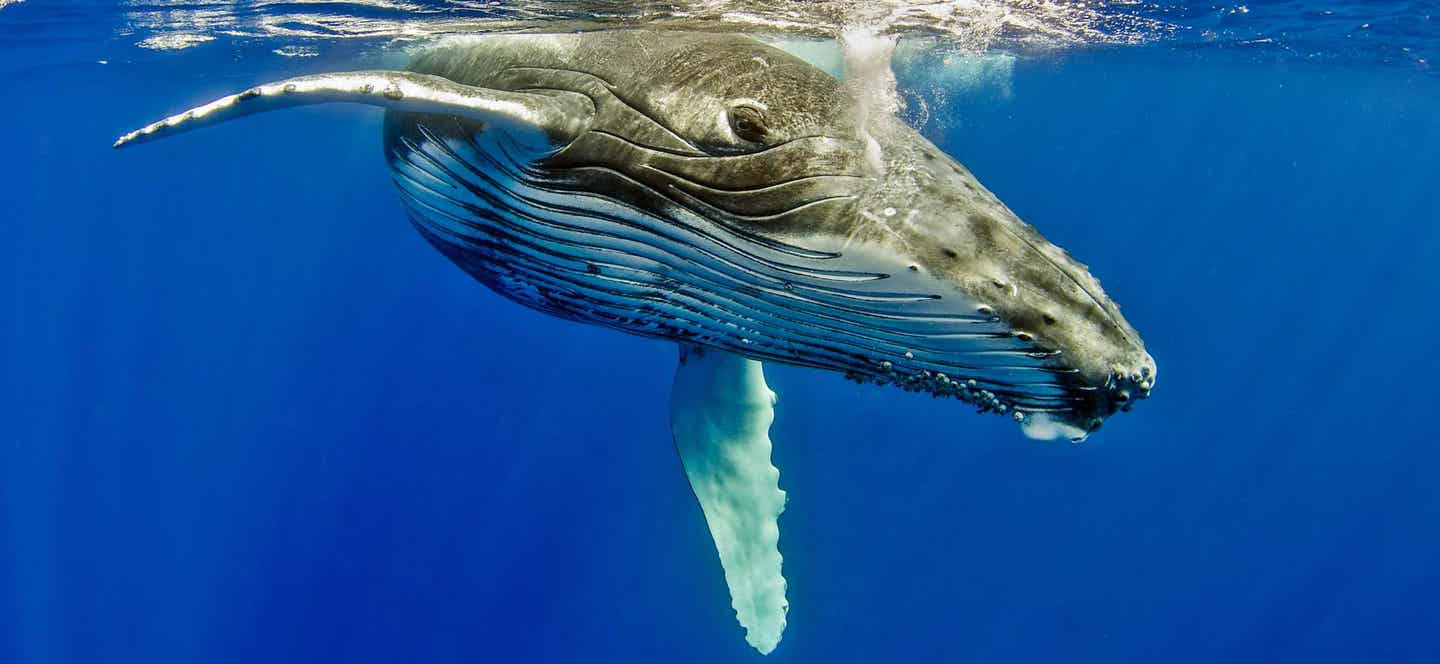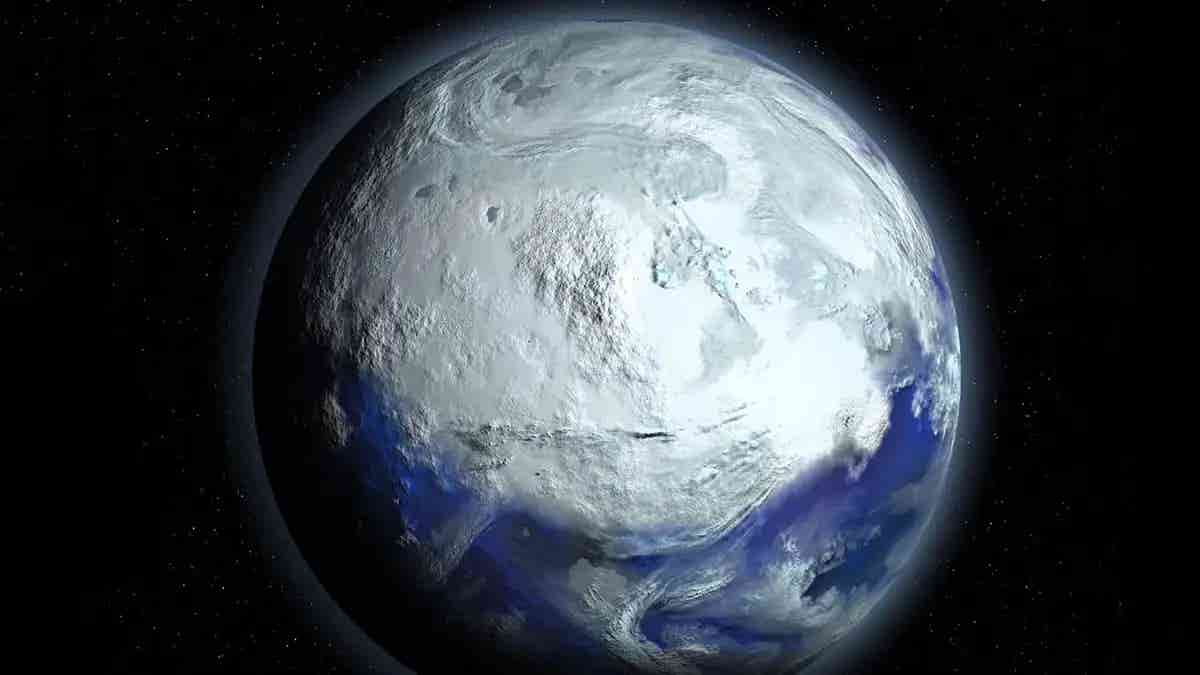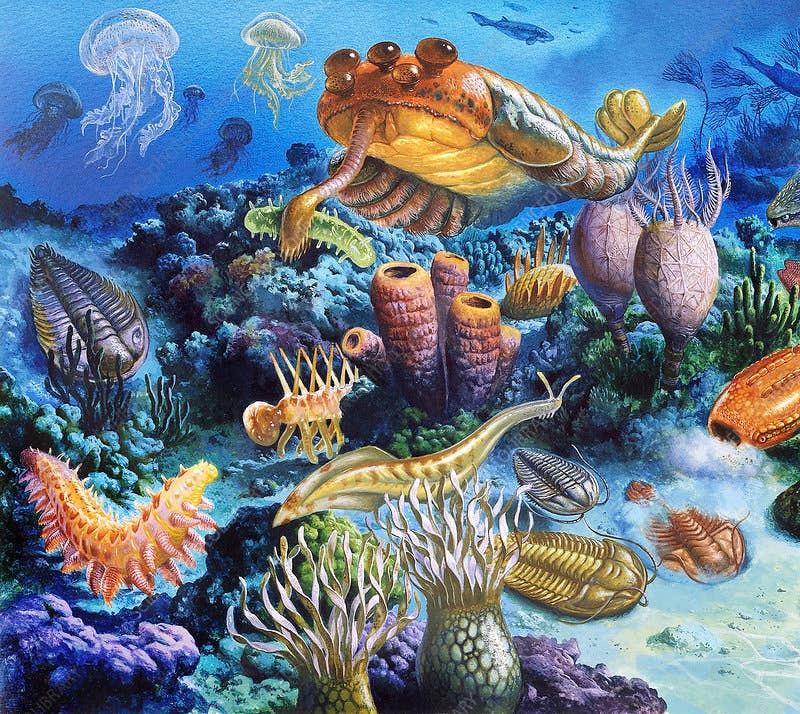Scientists first-ever ‘talk’ with humpback whales could teach us how to talk to aliens
Communicating with Earth’s marine giants holds profound implications for humanity’s quest to communicate with life beyond our planet.

[Dec. 16, 2023: JD Shavit, The Brighter Side of News]
A pair of playful humpback whales were captured on camera performing a double breach off Maui. (CREDIT: Creative Commons)
In a groundbreaking scientific project that seems straight out of science fiction, researchers from the SETI Institute, the University of California Davis, and the Alaska Whale Foundation have embarked on a remarkable journey into the depths of interspecies communication.
Their mission: to converse with a humpback whale named Twain and record the enigmatic "contact" calls of this majestic marine creature. What may appear as an extraordinary encounter with Earth's marine giants holds profound implications for humanity's quest to communicate with life beyond our planet.
The experiment unfolded beneath the ocean's surface, where the researchers utilized an underwater speaker to initiate their extraordinary dialogue with Twain, a humpback whale residing in the vast ocean depths. Twain responded in kind, matching the interval variations between signals of each playback call over a mesmerizing 20-minute exchange. The conversation that unfolded between humans and a humpback whale hinted at a level of understanding and interaction previously uncharted.
Related News
The echoes of this endeavor evoke memories of a classic sci-fi film, where an intrepid crew receives alien whale transmissions that can only be deciphered beneath the waves. Indeed, the implications of this interspecies communication experiment resonate with our deepest sci-fi fantasies and may, in turn, propel us closer to discovering extraterrestrial intelligence, according to a statement from the SETI Institute.
Brenda McCowan, the lead author of the study from the University of California Davis, expressed the significance of this remarkable achievement, stating, "We believe this is the first such communicative exchange between humans and humpback whales in the humpback ‘language.'"
Much like astronaut crews simulate missions to Mars or the moon on Earth to prepare for extraterrestrial exploration, the Whale-SETI team has delved into the intricate web of humpback whale communication systems. Their goal is to unravel the mysteries of these oceanic giants and, in doing so, gain valuable insights into how to detect and interpret signals from the depths of outer space. These findings may hold the key to developing advanced filters capable of deciphering and understanding extraterrestrial messages received from distant galaxies.
Dr. Brenda McCowan and Dr. Fred Sharpe at work onboard the Blue Pearl, image credit: Jodi Frediani. (CREDIT: SETI Institute)
Laurance Doyle, coauthor of the study from the SETI Institute, emphasized the relevance of their work, stating, "Because of current limitations on technology, an important assumption of the search for extraterrestrial intelligence is that extraterrestrials will be interested in making contact and so target human receivers.
This important assumption is certainly supported by the behavior of humpback whales."
The response of Twain, the humpback whale, to each playback call provided a mesmerizing display of intelligence and interaction. As if mirroring a human-like conversational style, Twain approached and gracefully circled the team's boat upon hearing the contact call emanating from the underwater speaker. This unexpected level of communication underscores the complexity of humpback whale behavior and cognition.
Fred Sharpe, co-author of the study from the Alaska Whale Foundation, emphasized the extraordinary capabilities of humpback whales, stating, "Humpback whales are extremely intelligent, have complex social systems, make tools—nets out of bubbles to catch fish—and communicate extensively with both songs and social calls."
Hence, working with humpback whales offers a unique opportunity to delve into the intricacies of intelligent communication in non-human species. The knowledge gained from these majestic marine creatures is poised to revolutionize the way we approach the search for extraterrestrial intelligence and our understanding of life beyond Earth.
The research conducted by the Whale-SETI team culminated in a study published in the esteemed journal PeerJ. In this remarkable endeavor, scientists tapped into the rich tapestry of humpback whale communication and behavior, unveiling potential breakthroughs in deciphering signals from distant stars. As humanity gazes skyward, pondering the possibility of intelligent life beyond our planet, the humble humpback whale may hold the key to unlocking the secrets of the universe.
Intriguingly, the communication observed between humans and humpback whales serves as a bridge between Earth's oceans and the infinite expanse of outer space. The experiment represents a fundamental step toward establishing a common language, not only between terrestrial species but also with potential extraterrestrial civilizations. It prompts us to reevaluate the boundaries of communication, challenging our assumptions about the forms and methods of intelligence that may exist beyond Earth.
As we delve deeper into the implications of this groundbreaking research, it becomes evident that the humpback whale's role extends beyond its oceanic habitat. These majestic creatures, renowned for their haunting songs and intricate social structures, may become our ambassadors in the quest for extraterrestrial intelligence.
The study's findings open a new frontier in the search for extraterrestrial signals. By applying principles of information theory, the Whale-SETI team endeavors to develop advanced filters that can sift through the vast expanse of cosmic noise, separating meaningful signals from the universe's vast cacophony. In this endeavor, the communication patterns observed in humpback whales may serve as a blueprint for the development of algorithms capable of identifying patterns in extraterrestrial transmissions.
The underwater dialogue with Twain and the subsequent analysis of the "contact" calls reveal a surprising commonality between humpback whales and humans. The ability to engage in a meaningful conversation, characterized by the matching of interval variations between signals, suggests a deeper level of understanding and cooperation between the species than previously imagined.
This remarkable feat of interspecies communication not only underscores the intelligence of humpback whales but also challenges the conventional boundaries of communication with non-human species. It prompts us to reconsider the richness of Earth's biodiversity and the potential for shared communication beyond our species.
As we contemplate the significance of this research, it is important to recognize that we stand on the threshold of a new era in our quest for extraterrestrial intelligence. The ability to converse with humpback whales may serve as a stepping stone in our journey to decode the enigmatic messages that may one day reach us from distant stars.
For more science and technology stories check out our New Discoveries section at The Brighter Side of News.
Note: Materials provided above by The Brighter Side of News. Content may be edited for style and length.
Like these kind of feel good stories? Get the Brighter Side of News' newsletter.
Joseph Shavit
Head Science News Writer | Communicating Innovation & Discovery
Based in Los Angeles, Joseph Shavit is an accomplished science journalist, head science news writer and co-founder at The Brighter Side of News, where he translates cutting-edge discoveries into compelling stories for a broad audience. With a strong background spanning science, business, product management, media leadership, and entrepreneurship, Joseph brings a unique perspective to science communication. His expertise allows him to uncover the intersection of technological advancements and market potential, shedding light on how groundbreaking research evolves into transformative products and industries.



